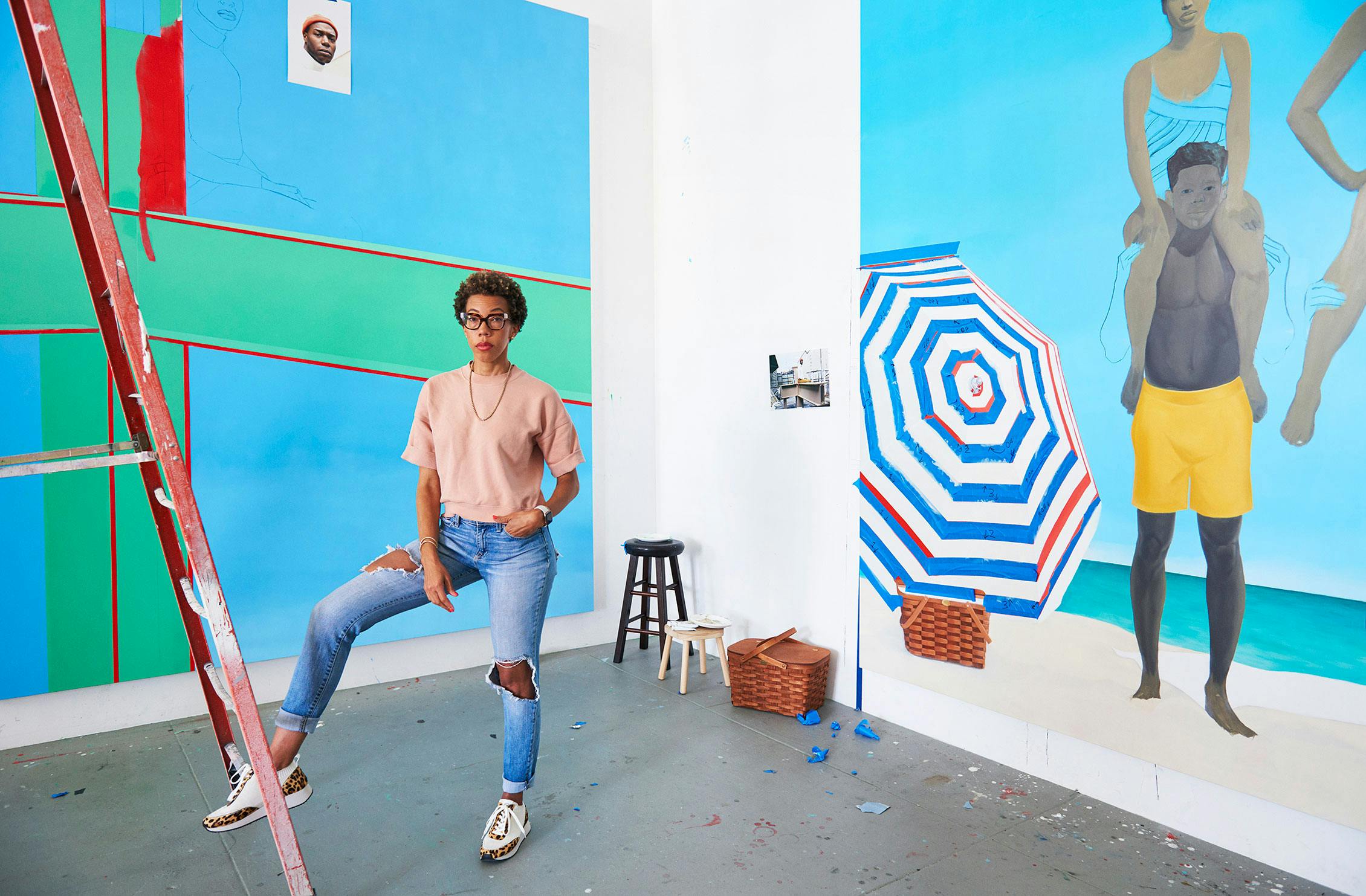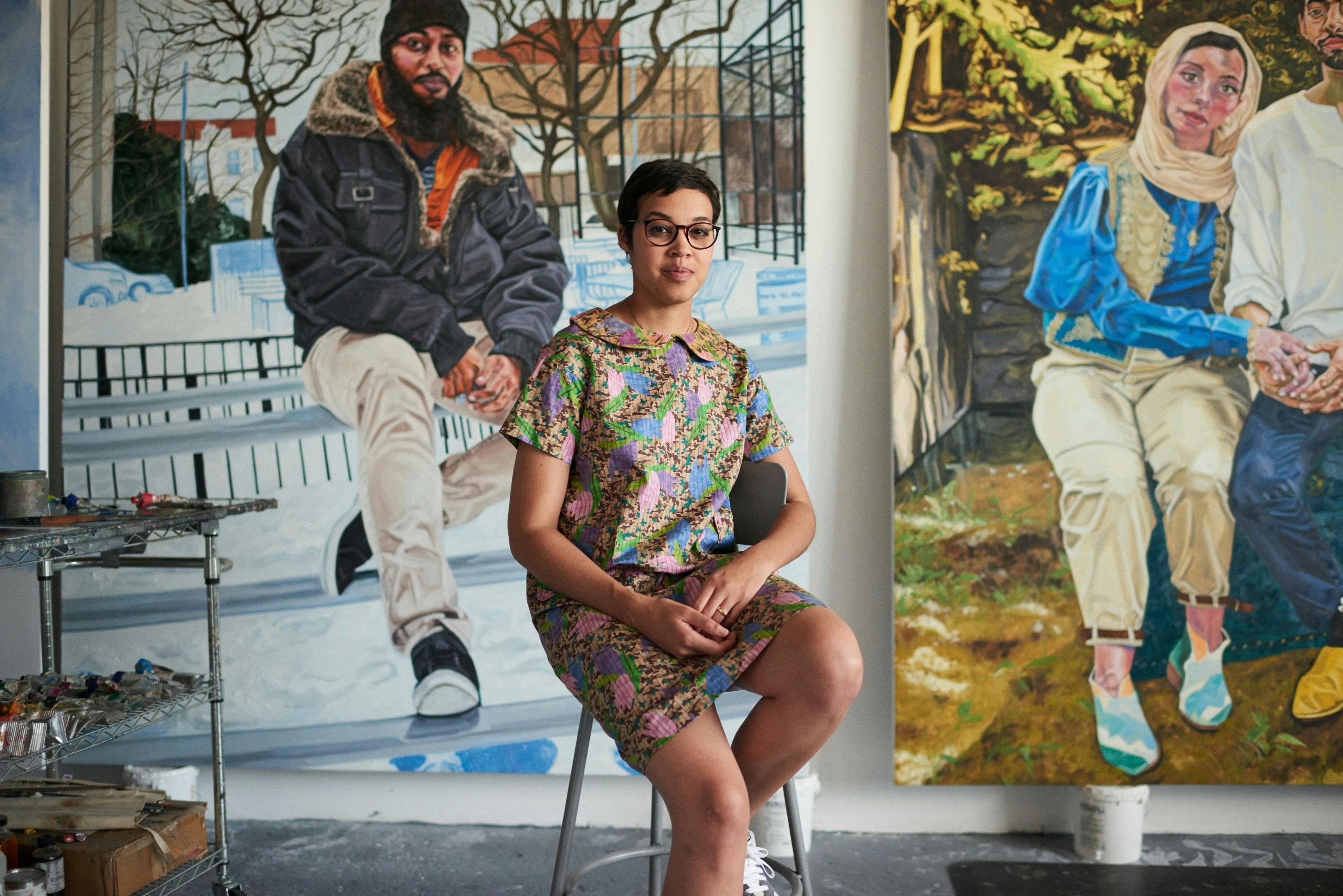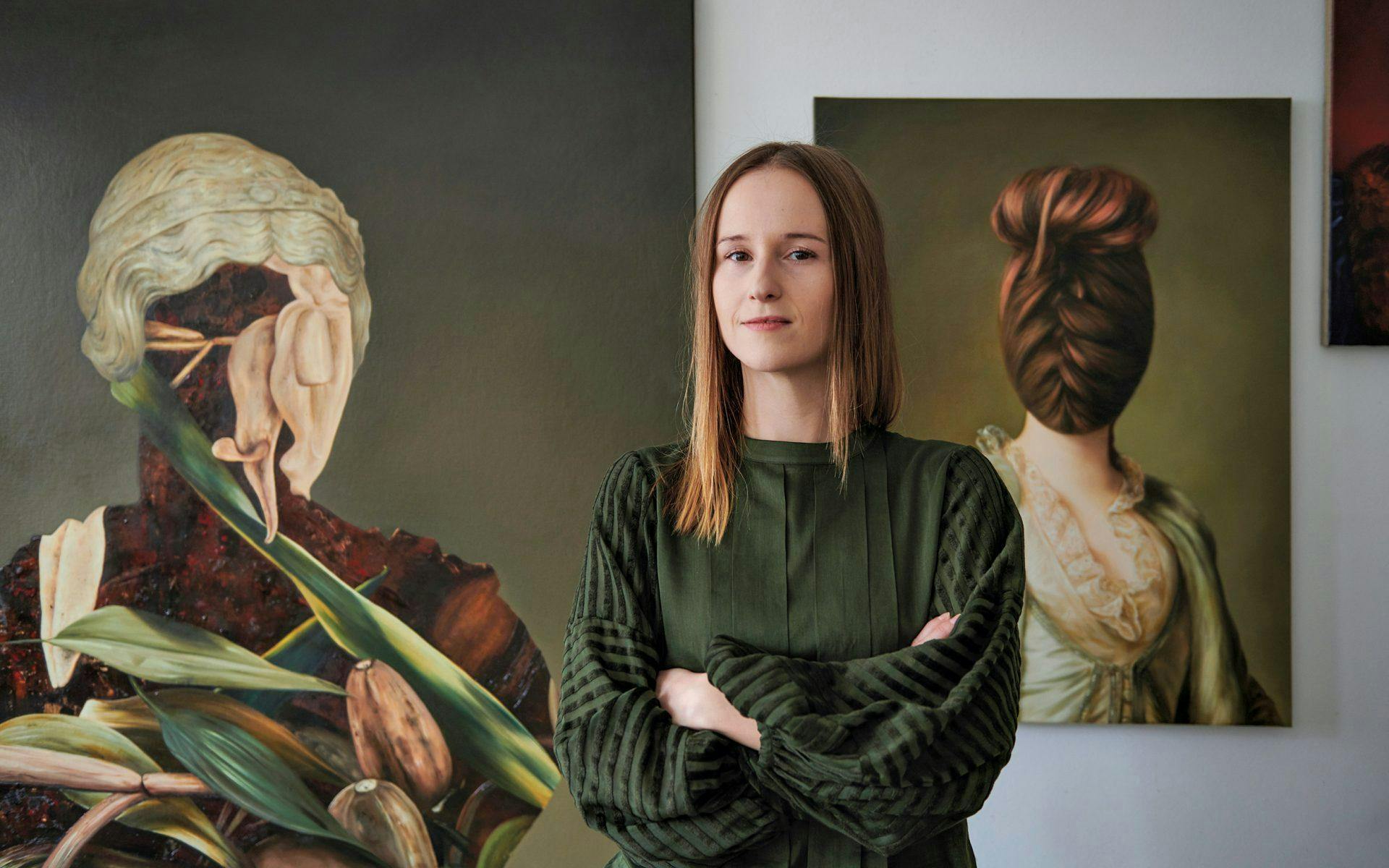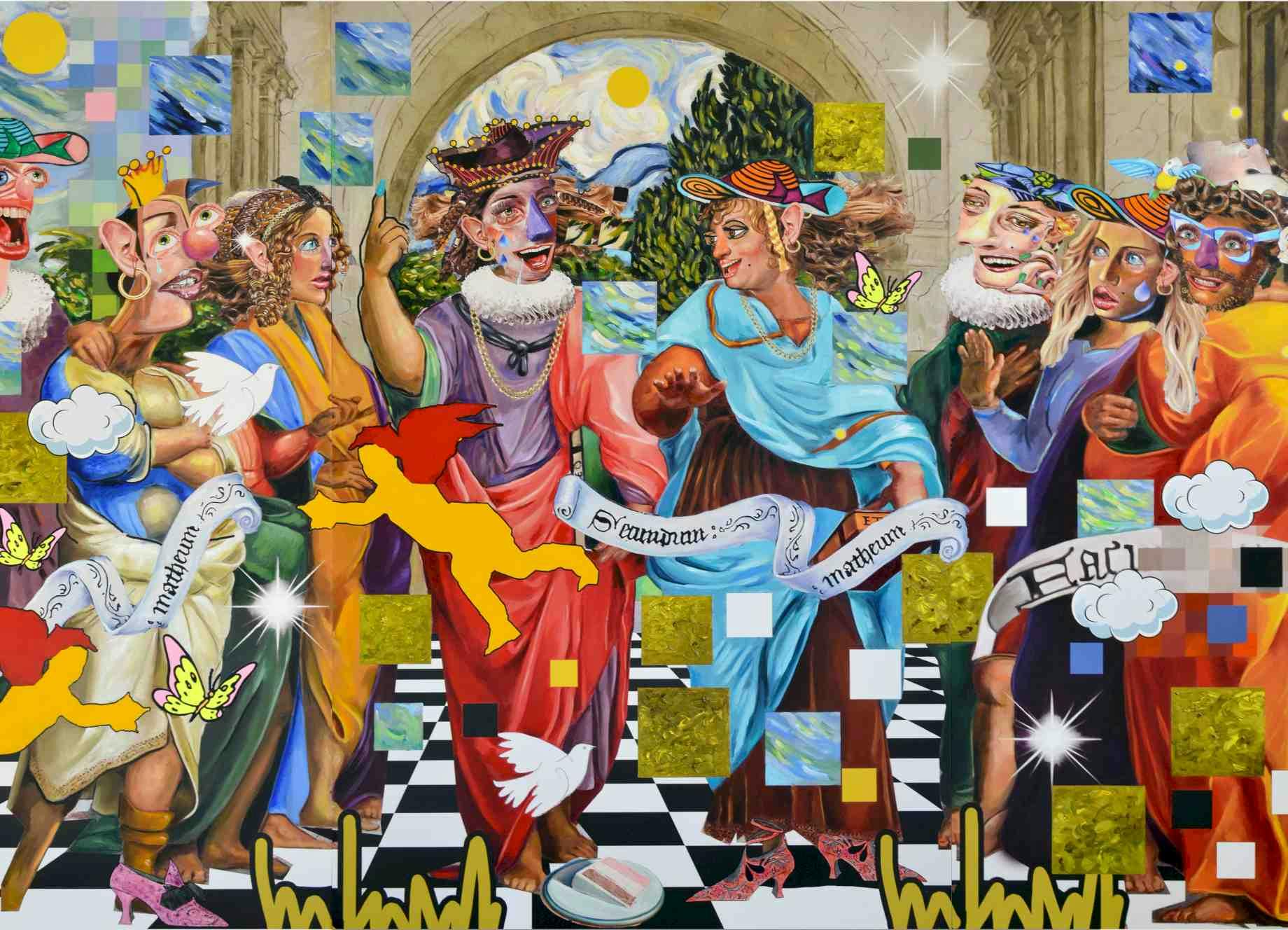
During a good portion of the 20th century, abstraction was favored by experimental artists who viewed figurative manifestations as traditional art forms. However, in recent years, contemporary artists have increasingly revived the legacy of figurative painting by using classical techniques to bring forth gender, race, and socio-economic issues and to evidence how stereotypes t have permeated the canon of Western art. Within this scenario, portrait painting is especially important amongst young contemporary artists of diverse nationalities including underrepresented or marginalized groups who, due to their ethnicity, economic means, or gender, have largely been left out of this generally elitist genre. In this post, we explore the work of five female contemporary artists who are redefining portrait painting.
Painting becomes a tool to get people to see the multiplicity of ourselves: our sadness, our joy, our love, our loss, our moments of stillness, and the moments that don’t get heard.
Amy Sherald

Amy Sherald (b. 1973, Columbus, GA; based in New York City)
Amy Sherald holds a BFA from Clark-Atlanta University and an MFA from Baltimore’s Maryland Institute College of Art. For some time Sherald’s art had an autobiographical component, but after her MFA, she shifted her focus to offering a critical view of African American cultural history through figurative portrait painting. As Peter Schjeldahl stated in the New Yorker, “Race anchors Sherald’s project in history. She represents it strategically, by modifying a policy of today’s leading painter of subjects from black society and culture.”
Sherald normally works from the staged photographs she takes of the strangers she encounters wherever she goes, be it on the streets or the airport. After introducing herself, the artist invites the sitters to her studio where she chooses an outfit for them or takes them shopping. Sometimes, she even goes to the subjects’ homes and selects something from their closets. This process has resulted in a distinctive portraiture style characterized by sitters that bear subtle expressions and whose skin tones are colored with a grayscale as a way of challenging the concept of color as race. “I want people to be able to imagine life outside of the circumscribed stereotype, or identity that can be controlled by many circumstances such as your environment, your parents, your friends, your skin color, your class,” she once explained. Interestingly, the detailed nature of her subjects’ expressions and garments contrasts with the frequently solid backgrounds of her paintings. This makes viewers focus even more on the evocative world Amy builds around her characters.
While Sherald’s work was already internationally recognized, her career skyrocketed when she was selected as the official portrait artist of former First Lady Michelle Obama in 2017. As explained in this New York Times article, this was the first time in history that an African-American artist was commissioned with a presidential portrait (Kehinde Wiley painted Barack Obama’s portrait), so the project had important political and social ramifications. As further proof of Amy’s thriving career, the works of this notable artist, who is also the survivor of a heart transplant at 39, have been sold for millions on the secondary market and belong to the collection of renowned museums worldwide. The artist also has a following of 187k on Instagram (@asherald).
I wish to tell a new tale and create my language: ambiguous, dense, natural, and organic.
Jordan Casteel

Jordan Casteel (b. 1989, Denver; CO, based in New York City)
Jordan Casteel is an extremely successful portrait artist who creates humanizing and realistic portraits of people in everyday situations. As shared in the New York Times, Casteel’s affinity for portrait painting first developed as an MFA student at Yale. During those years, the artist created a series of nude portraits depicting colored men lounging in domestic environments as a means to address the preconceptions of black masculinity. Over time, the artist’s interest expanded to documenting the people that inhabited her neighborhood (she resides in Harlem).
Casteel’s working process is meticulous as she develops her portraits from hundreds of photographs taken of her subjects in their natural surroundings and later elaborates one pictorial scene that condenses the subject’s most representative traits next to the settings that describe them. However, the artist's practice is also a versatile one as, on occasion, she has captured the anonymous man, woman, and child on her travels via the New York City subway. Regardless of the identity of her subjects, Casteel’s ultimate goal is to honor the people she encounters along the way, mainly black or brown folk. “I think seeing oneself in a museum wall has the power to transform your sense of self,” the artist once shared. At the same time, Casteel’s portraits challenge the traditional notions of whose portraits can inhabit museums and gallery walls. In Nimico Kulmiye Hussein’s words: “Casteel identifies momentary milieus regarding race, class and gender that have historically gone unnoticed and, even, forgotten.”
Jordan’s intimate approach to portrait painting has granted her international recognition. As proof of this, she was the recent recipient of the MacArthur Genius Fellowship, and her works have been featured in solo shows at the Denver Art Museum and New York’s New Museum. Notably, as Casteel shared with The Cut, she is deeply involved in the business side and tries to create long-lasting bonds with the collectors who acquire her works. Last but not least, Casteel also has a huge following on Instagram (@jordanmcasteel 88.4 k).
I think that’s essentially what my paintings are about. A reflection of something other than what’s projected out in the world. I’m focused on the way that we experience ourselves (people of color), and our interiority. It’s that private journey, the interior space, and stepping away from the public journey of blackness, and how people consume who we are, what we make, food, culture, and all of that.
Ewa Juszkiewicz

Ewa Juszkiewicz (b. 1984 Gdańsk, PL; based in Warsaw)
Ewa Juszkiewicz is a well-educated portrait artist who first dived into the genre in 2011. Since then, the artist has been reinventing the layouts and techniques utilized by traditional Western portrait painters through the inclusion of female subjects with distorted or effaced faces. In some of her compositions, largely influenced by Flemish early modern artworks, this Polish artist envelopes her subjects' heads in folded fabric or floral arrangements, and in others, she covers the faces with intricate braided hairstyles. The final result is a hybrid creature that captures the viewers attention and makes them question who they are and what lies beneath their concealed faces.
More so, by obscuring the expressive potential of the subject's face and keeping the rest of the compositional elements of traditional portrait painting intact, Juszkiewicz brings forth the schematic and objectified way in which women have been depicted throughout Western Art History. As Matthew Hearn has previously stated, “If history has rendered these individuals unremarkable, Juszkiewicz's act of re-painting them both extends this act of negation whilst also transforming these characters into extraordinary, surreal apparitions of their former selves.” Interestingly, in some of these paintings, the artist reproduces with great detail the techniques used by Old Masters as a means of establishlishing a dialogue with the artists whose work she is reinterpreting. “In this process, the following of the strokes of the original author’s paintbrush is an important element, which enables me to meet, metaphorically, the original author,” the artist once said.
Next to her distinctive portraits of women, Ewa has also produced a series of paintings considered missing or lost to theft, fire, or conflict. As explained in this Culture.pl article, using archival photographs, Ewa has re-created lost paintings by replacing missing colors and details with her own interpretations as a means to acknowledge the artworks’ troubled history and envision a new context for them. The artist’s paintings are widely recognized in major collections around the world. She is represented by Gagosian Gallery and her works are in museums such as the Museum of Modern Art in Warsaw, National Museum in Gdańsk, Zacheta of Contemporary Art in Szczecin, Zachęta Olsztyn, and Bielska Gallery BWA. She also has a following of 21.1 k on Instagram (@ewa_juszkiewicz).
My painting is about the individual and their faces but the formal elements of the work are kind of a fleshing out of their stories.
Aliza Nisenbaum

Aliza Nisenbaum (b. 1977, Mexico City, MX; based in Brooklyn)
Aliza Nisenbaum took an unusual yet interesting path to portrait painting. The artist initially studied psychology in Mexico for two years and did social work with Central American immigrants. However, after some time, Aliza shifted her career and enrolled at the School of the Art Institute of Chicago, where she completed both her BFA and MFA. As explained in this Tate article, a life-changing experience for the artist was the residency she did at Tania Bruguera’s Immigrant Movement International, a community-based project where immigrants can engage with contemporary art in an empowering way. There Nisenbaum taught English to Mexican and Central American immigrants and started to paint her students as a way of getting to know them better, the latter of which turned into a long-lasting creative strategy.
Stemming from Aliza’s socially charged practice, for years, the artist has created portrait paintings of marginalized subjects, mainly Mexican or Central American undocumented immigrants, subway employees, healthcare workers, and security guards, capturing them in bold colors against detailed private spaces. Notably, the artist’s patterned backgrounds are inspired by people’s homes as the artist views them as “an extension of the people’s personality, their biography.”
The resulting expressive portraits which the artist paints from life have a strong narrative component that evidences the insight the artist has into her subject’s lives and experiences. “The connection with my sitters is a very interesting part of the work – and very much outside my control. It’s unpredictable what somebody’s going to bring to a sitting,” the artist shared in an interview. Interestingly, the artist accompanies each of her projects with videos that document her interactions with a given community or individual and her working process. These videos further reveal Aliza’s interest in acknowledging the relationship she builds with each subject.
As an example of the type of work the artist normally creates, in 2019, she spent several months in the UK to fulfill a commission from Art on the Underground for a large group portrait of Transport for London staff at the Brixton tube station. On the other hand, the recent exhibition project the artist did for Tate Liverpool made her reinvent her working process as she was forced to paint the portraits of NHS Covid-19 workers from their photographs with Zoom as the only means of communication. The artist paired each portrait with a watercolor depicting flowers as a way of sending the sitters a metaphorical bouquet. The project was also accompanied by this touching video featuring comments from the artist and healthcare workers.
Nisenbaum has a thriving career. She has exhibited globally and has enjoyed shows at Tate Liverpool, MOCA Los Angeles, the Minneapolis Institute of Arts, and the São Paulo Museum of Art. In 2017, she was included in the Whitney Biennial.
I am drawn to art history so I can re-present it. I would like to tell a different story, one from a female point of view.
Allison Zuckerman

Allison Zuckerman (b. 1990, Harrisburg, PA; based in New York City)
Portrait artist Allison Zuckerman holds a BFA from the University of Pennsylvania, and an MFA from the School of the Art Institute of Chicago. Allison's practice is based on an innovative strategy of appropriation. She takes a selection of female-orientated images from diverse art historical periods and, through the application of acrylic paint and CMYK ink, fuses them into colorful and bold-looking collages. Her work unapologetically juxtaposes pop imagery with motifs drawn from the most celebrated works of Old Masters and seminal modern artists, such as Picasso and Cézanne. Sometimes she includes imagery from over 30 artists in a single painting. Alongside these references, the artist overlaps elements taken from our daily lives, such as emojis and pop-culture references. All of these elements come together in a satirical and irreverent aesthetic that intends to redefine the role of female figures in Western art’s historical canon.
Zuckerman’s works begin as digital collages that she then prints on canvas and paints on top of. Interestingly, as the artist shared in this interview, she frequently makes her many visual references explicit through the inclusion of diagrams that depict the art historical sources behind each work, all of which are from male artists as a means of subverting the primacy they have had throughout art history. In the artist’s words: “There’s no denying the contributions and significance of these artists; it’s about pointing out the inequalities that they have benefited from—unintentionally or intentionally. There’s a level of admiration that I feel, but it’s also about saying, well, you’re not going to get away with it anymore.”
This young artist’s rapid rise to fame was mainly due to her Instagram feed @allisonzuckerman (nowadays with 27k followers) which was discovered by art dealer March Wehby who later introduced her to the Rubells’, one of the most influential contemporary art collectors and patrons in the world. The couple ended up buying more than 20 artworks on their first studio visit and invited Allison to their prestigious residency program in 2017. From there the artist’s career took off. Consequently, Zuckerman has presented work in galleries across the globe and has exhibited her work in solo museum shows at The Akron Art Museum, The Herzliya Museum of Contemporary Art, and The University of Florida in Gainesville. Given the pop nature of her work, she is also sought after by brands to produce works and content for them. Some of her notable collaborations include Veuve Clicquot, TODs, Charli XCX, Elle USA, and Vogue Italia.